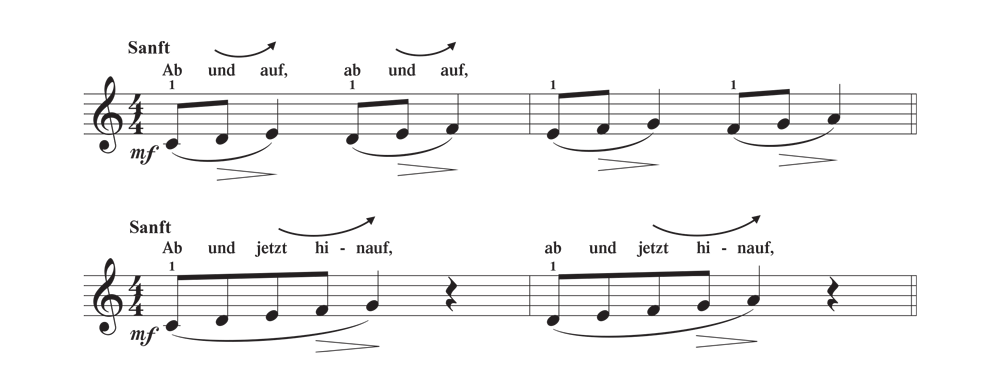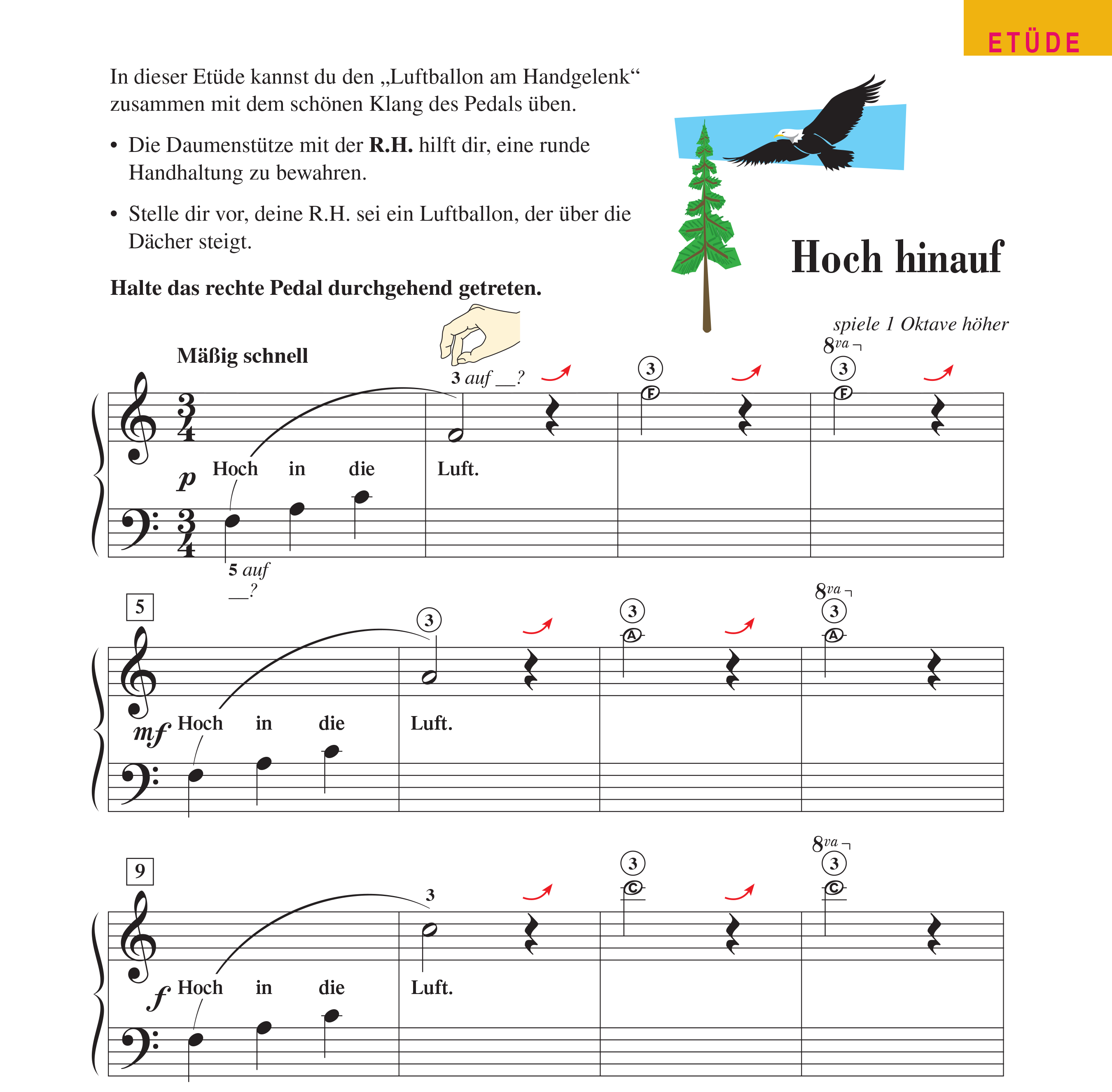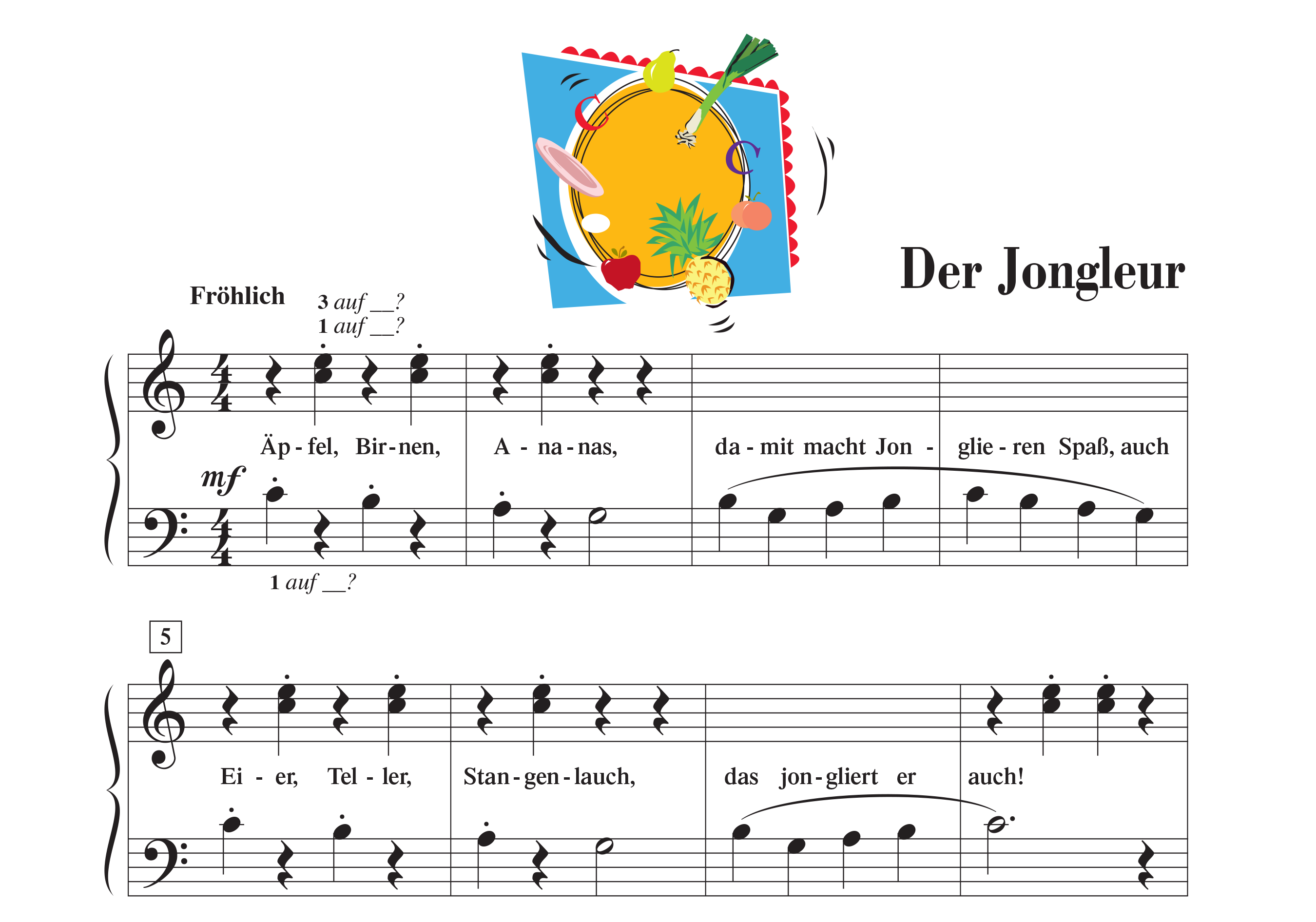Level 2: Articulation and the Wrist
Articulation and the Wrist
An essential concept of Level 2 is beginning articulation, specifically legato and staccato. These terms are so familiar to us as music teachers that we might overlook the importance of these touches in developing technique and musical expression.
Perhaps you have noticed that there are no articulation marks at Level 1 — no slurs and no staccato marks! This delay in teaching legato is to ensure that a modicum of finger independence develops before insisting on connected touch. When a student’s finger and small muscle coordination is undeveloped (common, and not a cause for concern), an insistence on legato playing can cause tension in the hand. This happens when pressure is maintained against the keybed. In most cases, the playing of a key should be followed by immediate relaxation, maintaining only sufficient balance of the hand and arm to keep the key depressed.
It is common to hear Level 2 students play all notes detached, poking at each key with a quick pump of the wrist. While we want to minimise (but not necessarily eliminate) the wrist pumping, this non-legato touch does, in fact, insert a point of relaxation between each note which can be beneficial. The student is naturally building coordination by practicing a relaxation response after each finger plays. Granted, it doesn’t sound finessed to a musician’s ear, but it does seem to improve coordination — and rhythm as well.
Wrist Gesture
What does it mean to play legato? Yes, it is a connected touch but, more importantly, it is the playing of several notes in a single gesture. It is initiating a phrase with a drop of arm weight and passing (transferring or “rippling”) that weight from finger to finger.
In Piano Adventures®, the component parts of a beautiful legato touch are isolated and sequenced over several levels with the Technique Secrets in the Technique & Performance books.
- Height of the wrist: This is established at Level 1 with the effective Technique Secret #5 called “Thumb Perch.” Playing on the side tip of the thumb (instead of a horizontal thumb) is like magic and eliminates a sagging wrist, which is so common at this level.

(Technik- & Vortragsheft 1, S. 7)
- Range of wrist motion: At Level 2, Technique Secret #2 is a Relaxed Wrist. An imaginative exercise called Wrist Float-off establishes the range of motion for the wrist. The student places both hands on the closed piano lid and pretends an imaginary balloon is pulling the wrist upward until only the tip of finger 3 is touching the surface. This precludes a locked wrist and models the gesture for an artistic phrase ending.

(Technik- & Vortragsheft 2, S. 4)
- The wrist gesture:In Level 3, the Wrist Float-off reappears with an exercise called “Making Rainbows”. The student “paints” graceful rainbow shapes across the full range of the piano. This paves the way for a developing command of the keyboard through graceful octave shifts.
- The slur gesture: In Level 4, the wrist motion is refined with a slur gesture — Technique Secret #2 — using a drop and release of arm weight through several notes. Here the student perfects the subtle “down-and-up” motion of the slur gesture.

(Technik- & Vortragsheft 4, S. 7)
- The tapered ending: At Level 5, the focus is on an artistic “rounding off” of the phrase ending —Technique Secret #2. The wrist gesture carries the weight off the key to soften the last note of the slur.

(Technik- & Vortragsheft 5, S. 33)

(Technik- & Vortragsheft 2, S. 15)
Legato and the Wrist
So what do we expect of the student at Level 2?
We want a flexible, relaxed wrist that freely moves with an established range of motion. Downward wrist motions are minimised here, as these tend to collapse the fingertip and lock the wrist low. The up motion is the counterpart of the arm weight drop. The student drops into the phrase with arm weight and releases the weight with the Wrist Float-off. This needn’t be complex. Simply encourage the student to apply the Wrist Float-off at certain points in the music.
There are countless applications when we look beyond just phrase endings. The Wrist Float-off is tremendously valuable for preparation. The rising wrist can carry the hand to its new placement in crossovers, octave leaps, and position changes. It also lends grace to closing chords. And long-held notes come alive by replacing a static hand with a wrist that slowly rises through the duration of the note.

(Unterrichtsheft 2, S. 34)
Staccato and the Wrist
There is no single way to play staccato. Staccato playing is always contextual — that is, the execution of the staccato depends on the musical context. At Level 2, the wrist staccato, called a “Light Hand Bounce”, is introduced with Technique Secret #3. The student, with a rounded hand and all five fingers, taps a woodpecker rhythm on the closed piano lid. This technique essentially dribbles the hand from a slightly elevated wrist. Notice how well this complements the Level 2 theme of relaxing the wrist and finding its appropriate range of motion.

(Unterrichtsheft 2, S. 71)
This staccato technique applies fittingly to the repeated notes and repeated intervals that characterise the repertoire at this level.
This gentle hand bounce not only relaxes the wrist, but also provides a technique for soft, accompanying chords. We see this highlighted in Unit 8 where chords are first introduced. Instead of loud, clunky chords that overwhelm the melody, the left hand plays soft, staccato chords for a pleasing balance. Notice the compositional placement of the accompanying blocked chords on beats where the melody is sustained, not played.
Summary
In summary, the Wrist Float-off and the Light Hand Bounce constitute essential wrist gestures that derive from their counterparts — legato and staccato. These gestures provide a technical foundation on which more refined technique can be developed. And, importantly, whether through shaping a phrase, softening an accompaniment, or adding elegance to an ending, these gestures add a great degree of musical artistry … which is especially appreciated at this early level.


